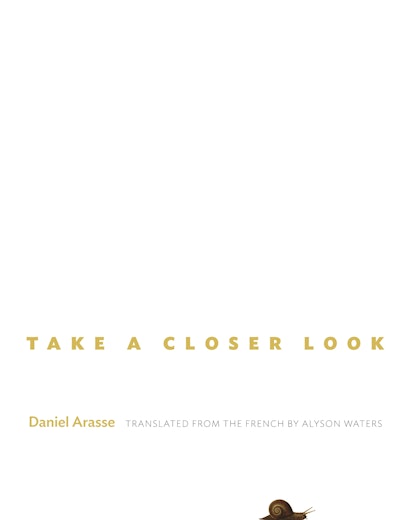What happens when we look at a painting? What do we think about? What do we imagine? How can we explain, even to ourselves, what we see or think we see? And how can art historians interpret with any seriousness what they observe? In six engaging, short narrative “fictions,” each richly illustrated in color, Daniel Arasse, one of the most brilliant art historians of our time, cleverly and gracefully guides readers through a variety of adventures in seeing, from Velázquez to Titian, Bruegel to Tintoretto.
By demonstrating that we don’t really see what these paintings are trying to show us, Arasse makes it clear that we need to take a closer look. In chapters that each have a different form, including a letter, an interview, and an animated conversation with a colleague, the book explores how these pictures teach us about ways of seeing across the centuries. In the process, Arasse freshly lays bare the dazzling power of painting. Fast-paced and full of humor as well as insight, this is a book for anyone who cares about really looking at, seeing, and understanding paintings.
Awards and Recognition
- One of Choice's Outstanding Academic Titles for 2014
Daniel Arasse (1944-2003) was professor of art history at the Sorbonne, director of the French Institute in Florence, and director of studies at l'École des Hautes Études en Sciences Sociales. His many books include Vermeer (Princeton), Botticelli, and Anselm Kiefer.
"In six short essays, Arasse shows what it is to enter into the complexity of a work, inspect the nooks and crannies, and reject conventional wisdom."—Phillippe Dagen, Le Monde
"The casual nature of [Arasse's] language cannot mask his tremendous erudition, all while emphasizing his ease in navigating within the pieces and his familiarity with the Zeitgeist."—Armelle Godeluck, Lire
"[The chapters in Take a Closer Look] have the depth of scholarly essays and the irreverent charm of the best fiction."—Michèle Gazier, Télérama
"Take a Closer Look is an outstanding example of what is possible when the stiff formalities of scholarly prose are cast aside in favour of a more playful, imaginative approach. . . . [A] delightful guide to seeing art with new eyes."—K. E. Gover, Times Higher Education
"In this publication of work by the eminent late art historian Arasse, the author searches for the meaning of master paintings. He discusses details of work that are often overlooked, and thus provides descriptions of things usually not seen."—Choice
"Arasse was a terrific writer with a brilliant mind and this book is redolent with wit and intellectual authority. He has a wonderful way of asking questions, of taking the reader with him on his intellectual journey. In this case each journey begins with the problem posed by a single prominent old-master painting, and ranges widely from there across interpretive and historical concerns. The informal, speculative, and performative quality of Arasse's voice in these pages will help assure the book's wide appeal and accessibility."—Marc Gotlieb, Williams College

